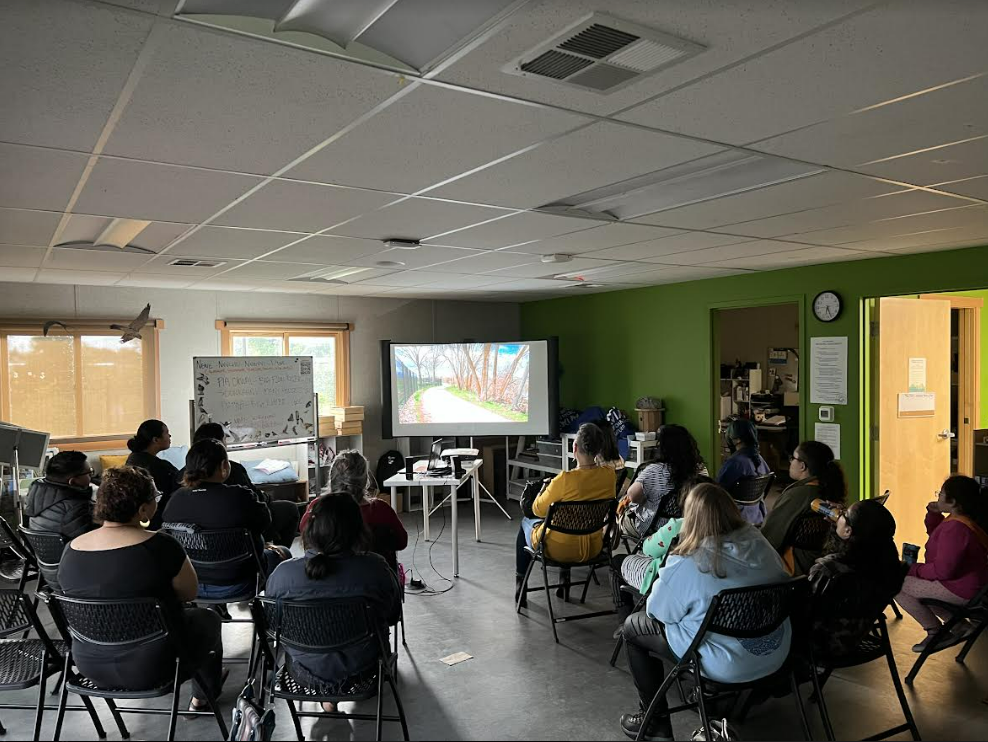Stories of Place: An Eco-Justice Film Series

The Stories of Place documentary film series is a project that began about one year ago at the end of 2022 and has helped guide efforts and pilot programs at the Nature Center and the Aviary. When we consider conservation and environmental issues we must ask ‘whose visions and stories will guide our futures?’. This is an eco-justice film series because it treats ecological and climate issues as social and cultural, while also confronting systems of power and the various types of disparities they produce. A foundational idea that underpins this project is that cultural and biological diversity have connected importance.
Another idea this project has helped develop further is challenging the idea of community engagement in conservation work. Community engagement while possibly a starting point ultimately refers to an outside perspective coming in, which is often temporary at best and at its worst perpetuates deficit views and a savior complex. A goal of The Nature Center at Pia Okwai (Jordan River Nature Center) by Tracy Aviary is to build a community-based nature center or in other words a nature-based community center. When something is community based it upholds an inside perspective and carries the stakes and investment of closeness along with a more complex and nuanced point of view. Community-based work is more sustainable and requires outside partnerships to give up some power in the process of relationship making. Ultimately, community-led work can emerge out of such an approach, offering a perspective that is often excluded, yet brings important insights to solutions by and for the people most affected, and that benefit many more.
‘Stories of Place’ is a four-part series of short documentary films that features incredible voices from individuals who offer profound views of what it means to be here and of this place, particularly in relation to Pia Okwai (Big Flow/River, Jordan River). Taking lived experience seriously provides important viewpoints derived from empirical observations of those who are being mindfully present in place, which can then become embedded in worldviews and practice over time.
Part 1 features Secadio ‘Son’ Sanchez who is a Diné and Xicano prayer runner and social worker. Son is a powerful leader for youth and in local Indigenous communities. I was introduced to Son through Marissa Beckström who is the director of The Nature Center at Pia Okwai who encountered him during one of his walks with youth along the parkway trail. Son was gracious enough to share some of his story and wisdom about prayer running and the importance of setting apart this place along the river as a sacred location.
Part 2 features Frances Ngo who is a Mexican/Chinese descendant and conservation outreach biologist for Tracy Aviary. I met Frances last year when I began working here, and have learned that in the last three years she has been a crucial force in diversifying conservation science work and approaches. She has planned and led events in our organization such as Latino Conservation Week and Baile for the Great Salt Lake, as well as bridged partnerships with local poets, artists, and the Spanish speaking community.
Part 3 features Dr. Tēvita Ka‘ili who is an Indigenous Tongan anthropologist. He is also known by the title Maui TāVā he Akó, referring to his ancestor Maui and his intellectual work in the Tongan philosophy of time-space. His work highlights the role of marking relationships between people and place across time. He is a powerful mentor to me and many others and has local connections to West Valley and Glendale. Dr. Ka‘ili demonstrates a dynamic sense of identity and place-making that embraces Indigenous mobility.
Part 4 features Viviana Hernandez who is a fearless outdoor adventurer and world travelled kayaker who descends from highland Mayan peoples and many others. She is a local home-grown athlete with roots in the Rose Park community who began her connections with water through the Northwest Piranhas swim team. She is my little sister, so I have known her for a long time. She has regularly made the world bigger for her family and local community and provides thoughtful insights from her life experiences.
These films are shared during Native American heritage month and part 1 begins with a local Indigenous perspective. In this geographical context Indigenous storytelling for many groups is often set apart and reserved for winter time. It is in that spirit they are shared at this time. While there will be many different responses and perspectives to these films, some of my own reflections from these stories are the power of personal approaches to connecting to place through one’s own passions and views. Additionally, the inspirational force of memory and actions that demonstrate and create new relationships to place is a lesson I carry with me from these stories. An invitation I share along with these films is to consider a view of nature that sees our place and connections in the physical world, and in that sense that we are nature, that nature is everywhere, and that nature is for everyone.
By Arcia Tecun